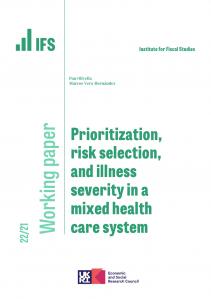The Liberal Democrat manifesto contains more extensive and more detailed tax and spending proposals than those of the other main UK parties. But taking as given the Liberal Democrats' estimates of the amounts that their proposals will cost and raise, the document is less clear than it could be in setting out how these proposals fit into the party's overall plan to repair the public finances.
The Liberal Democrats propose a net tax increase that they think would raise £2.4 billion in 2011-12 and about 0.17% of national income (£2.5 billion in 2010-11 terms) in 2013-14. (A separate observation here discusses whether their numbers add up - and the short answer is that it is very hard to be sure.) The Liberal Democrats have also identified spending cuts that they claim would save 0.45% of national income (£6½ billion) in the same year.
Does this mean that the Liberal Democrats are planning to be more ambitious than Labour in reducing the deficit?
If anything the manifesto implies the opposite: it says that a Liberal Democrat government would carry out a Spending Review over the summer and autumn "with the objective of identifying the remaining [our italics] cuts needed to, at a minimum, halve the deficit by 2013-14". At face value this might suggest a less ambitious plan to reduce the deficit overall than that implied by the forecasts in the Budget. The Budget predicted that the deficit (total government borrowing) would be down to 5.2% of national income in 2013-14, whereas halving it means that it need not be reduced below 5.9% of national income (half the 11.8% forecast for 2009-10). But the Liberal Democrats tell us that this promise to "at a minimum, halve the deficit" should be taken as shorthand for matching the deficit reduction path set out in the Budget. So, overall, they are no more or less ambitious than the Government.
So the measures they have set out today tell us something about the composition of the tightening they propose rather than its size. In 2013-14 the Government is planning to deliver a tax increase of 1.0% of national income (thanks to measures already announced) and a spending cut of 2.2% of national income (to be detailed in a Spending Review after the election). The Liberal Democrats would increase the net tax increase to 1.2% of national income, thereby reducing slightly the overall size of the spending squeeze implied by the Government's Budget forecasts. Over the next three years at least, this now gives us a clear ranking. The three parties all want to rely more on spending cuts than tax increases to repair the public finances, but the Conservatives plan the biggest spending squeeze, then Labour and then (not far behind them) the Liberal Democrats.
Looking out over the whole fiscal tightening, which the Government expects to have to continue until 2016-17, the picture is somewhat different. The Liberal Democrats say that further net tax increases beyond those already announced by the Government (plus their bank profit levy) should only be a "last resort". The Government has pencilled in a fiscal tightening of 1.4% of national income in 2015-16 and 2016-17 that it has not allocated between spending cuts and tax increases, but which it would seem reasonable to assume they might split 2:1 between spending cuts and tax increases in line with the split over earlier years - requiring them to announce additional tax increases worth around 0.4% of national income (£6 billion). If the Liberal Democrats achieved all of this through spending cuts, they would end up using spending cuts to achieve a larger part of the total tightening than Labour, but still less than the Conservatives.
If they are costed correctly, the specific spending cuts set out by the Liberal Democrats in the manifesto would achieve a little under a quarter of the total discretionary spending cut as a share of national income that they need to match the Government's deficit forecast for 2013-14 - and a smaller proportion still of the eventual cut that would be necessary to complete the fiscal tightening in 2016-17.
Each of the three main parties has only filled in a small part of the deficit reduction plan jigsaw - in each case we would have to wait for a post-election Budget and/or Spending Review for a more complete picture to be filled in.










